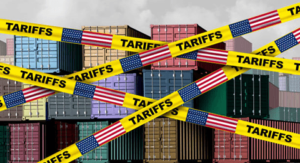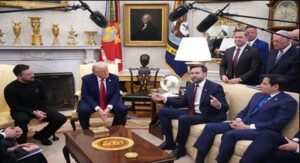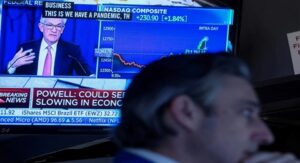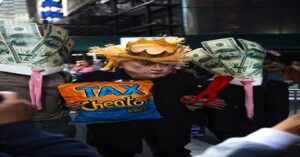
Will Trump’s Tariffs Accelerate America’s Economic Decline?
Will Trump’s tariffs accelerate America’s economic decline? Evidence suggests they already are. By imposing a 25% tariff on imported cars and light trucks, President Trump aimed to boost domestic manufacturing, but instead he’s inflating consumer prices, deterring investment, and isolating the U.S. from global supply chains.
While the promise was to “make American automobiles great again,” the reality is a potential regression into outdated, labor-intensive industries. History—from the fall of Argentina to America’s pivot from textiles—shows that protectionism rarely leads to prosperity. Rather than reviving industry, Trump’s tariffs risk weakening America’s long-term economic competitiveness and global influence.
Trump’s Tariffs Accelerate America’s Economic Decline
On March 26, President Donald Trump issued an executive order imposing a 25% tariff on all imported cars and light-duty trucks entering the United States. The policy went into effect on April 3, just one day after the administration unveiled its broader “reciprocal tariffs” initiative aimed at key U.S. trading partners. Trump defended the move by promising a revival of domestic manufacturing, confidently stating that “our automobile business will flourish like it’s never flourished before.”
However, the economic rationale behind this decision is deeply flawed. Rather than strengthening the auto industry, the tariff threatens to damage the U.S. economy, isolate American manufacturers, and provoke retaliation from global allies. The following eight points explain why this policy could backfire significantly.
Read More: The Economic Consequences of Trump’s Second Administration
Table of Contents
1. Defying Economic Orthodoxy
Trump’s decision flies in the face of centuries of economic theory. From Adam Smith to Milton Friedman, economists have agreed on the benefits of free trade. These thinkers argued that countries should focus on industries where they have a comparative advantage, promoting efficiency and innovation across borders.
By contrast, protectionist tariffs artificially distort market dynamics and often result in inefficient allocation of resources. Imposing a blanket 25% tariff disrupts supply chains and contradicts this well-established wisdom, suggesting either a lack of understanding or a disregard for basic economic principles.
Read More: Is Trump’s Industrial Policy More Continuity Than Disruption?
2. A Misguided Attempt to Rebuild US Manufacturing
The primary argument behind the tariff is to force foreign automakers to set up factories in the US, thus boosting local production and job creation. However, this rationale overlooks a crucial factor: the high fixed costs associated with automobile manufacturing.
From land purchases and plant construction to regulatory approvals and equipment installation, building car factories requires massive capital investments. For companies to commit to such moves, they must be confident that the tariffs will last 10 to 15 years—something no administration can credibly guarantee. Without that assurance, firms are unlikely to invest, rendering the policy ineffective.
3. Short-Term Gains, Long-Term Losses
Even if some foreign companies did move production to the US, the long-term outlook remains bleak. The increased labor costs in the US would make American-made vehicles more expensive, both domestically and globally.
Countries like China, India, Mexico, and Indonesia, with their lower labor and production costs, would continue to outcompete the US in international markets. Over time, this would weaken the global competitiveness of American automakers, turning what was supposed to be a rebirth into a slow decline.
Read More: Trump’s Ukraine Controversy Sparks Global Fallout
4. Artificial Job Creation Can Backfire
Trump’s policy seeks to artificially boost demand for labor in the auto industry. While this may create jobs in the short term, it ignores broader economic shifts. As automation and artificial intelligence advance, labor-intensive manufacturing is becoming increasingly obsolete.
Attempting to reverse this trend through protectionism is like trying to stop the tide with a sandcastle. Instead of focusing on low-skill manufacturing jobs, the US should be investing in high-skill, technology-driven industries that align with future economic trends.
5. A Lesson from the Textile Industry
The decline of the US textile industry offers a compelling parallel. In the early 20th century, America was a global leader in textile production. But as labor costs rose and globalization advanced, the industry shifted to countries like Vietnam, Bangladesh, and Turkey.
Rather than imposing heavy tariffs to preserve these jobs, the US economy transitioned toward innovation and research-led sectors like pharmaceuticals, software, and aerospace. This pivot contributed to America’s economic dominance. If the US had clung to textiles through protectionist measures, it might have saved a few factories—but at the cost of becoming an innovation backwater.
Read More: Trump’s Economic Agenda and Challenges
6. Strategic Tariffs vs. Blanket Protectionism
Tariffs are not inherently bad. When used sparingly and strategically—such as to nurture infant industries or respond to unfair trade practices—they can have value. However, blanket tariffs on established global industries like automobiles usually backfire.
Trump’s across-the-board approach fails to recognize the nuanced role tariffs can play and risks eroding the US’s comparative advantage by locking the country into outdated production models. Instead of empowering innovation, it promotes inefficiency and stagnation.
Read More: The Economics of Techno-Colonialism
7. The Argentine Warning
History offers a powerful warning from Argentina. In the early 20th century, Argentina was one of the world’s wealthiest nations, even rivaling the US and major European powers. But following a 1930 military coup, the new government pursued aggressive protectionist policies, doubling tariffs and restricting immigration.
While the US was opening its economy, investing in education, and fostering innovation, Argentina turned inward—and its economy stagnated. By choosing isolation over integration, it squandered its potential. Trump’s tariffs echo this same dangerous retreat from global engagement.
8. Innovation and Redistribution
Rather than trying to resurrect dying industries, the US should embrace the future. Technological advancement is inevitable, but it does displace workers. The solution isn’t protectionism—it’s redistributive taxation and profit-sharing mechanisms to ensure the benefits of growth are shared fairly.
Properly designed, these policies won’t discourage innovation but will help bridge the growing gap between billionaires and ordinary workers. As automation reduces the demand for labor, governments must step in to rebalance the distribution of wealth, not prop up inefficient industries.
Read More: The Role of European Central Bank in Decarbonization and Price Stability, Rethinking
Bottom Line
President Trump’s 25% auto tariff may appeal to nostalgic voters and industrial-era fantasies, but it is a fundamentally flawed policy. It misunderstands basic economic principles, misreads market realities, and misjudges the direction of global industry. The real path to prosperity lies not in walls—tariff or otherwise—but in open markets, adaptive innovation, and smart redistribution.
Rather than hoping to relive a bygone era, the United States must look ahead, preparing its economy for the challenges and opportunities of the 21st century. The world is moving forward. America must choose whether to lead that journey—or be left behind.





